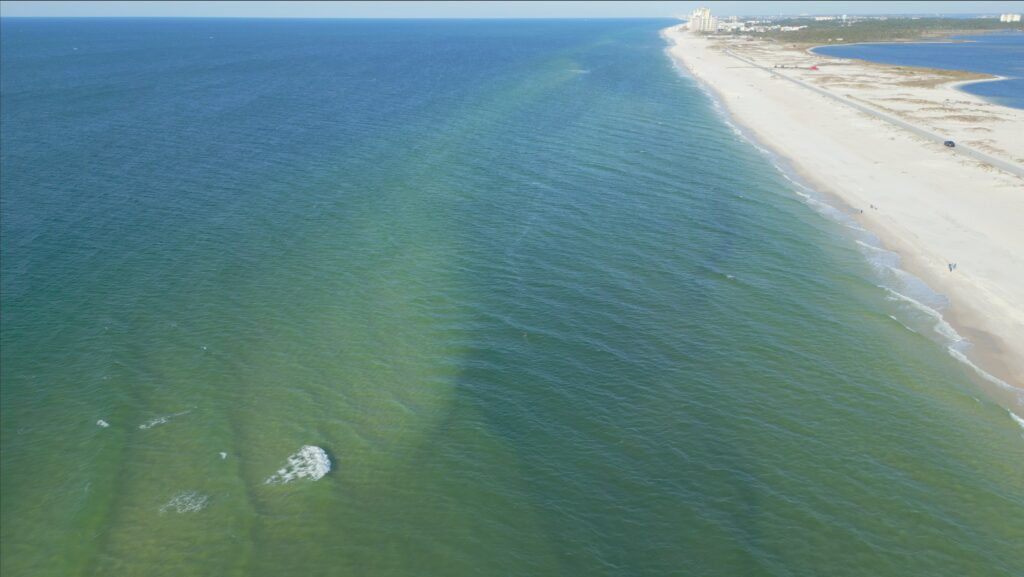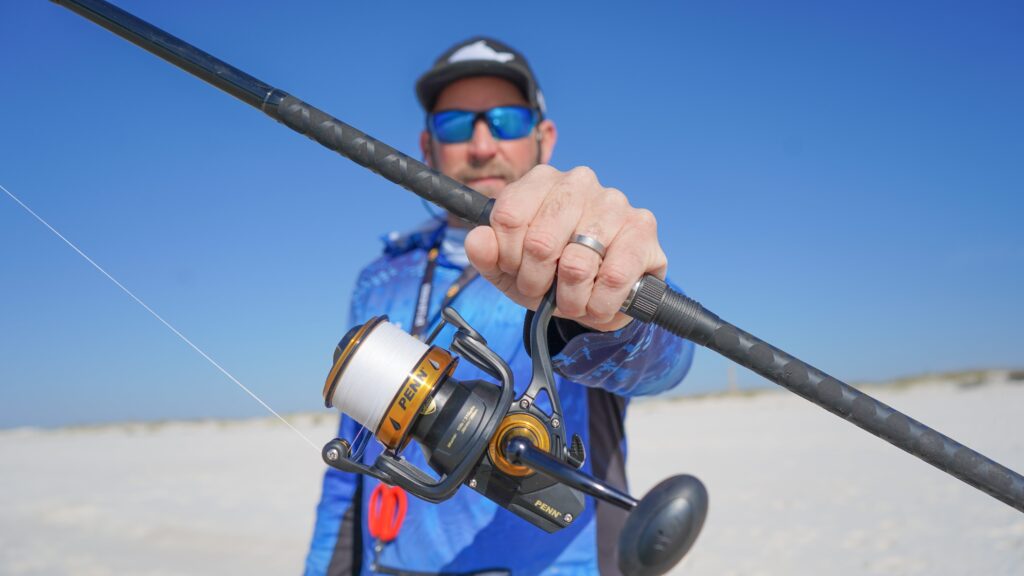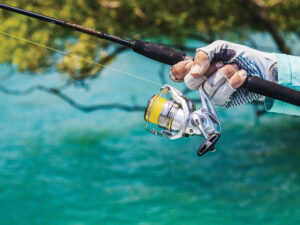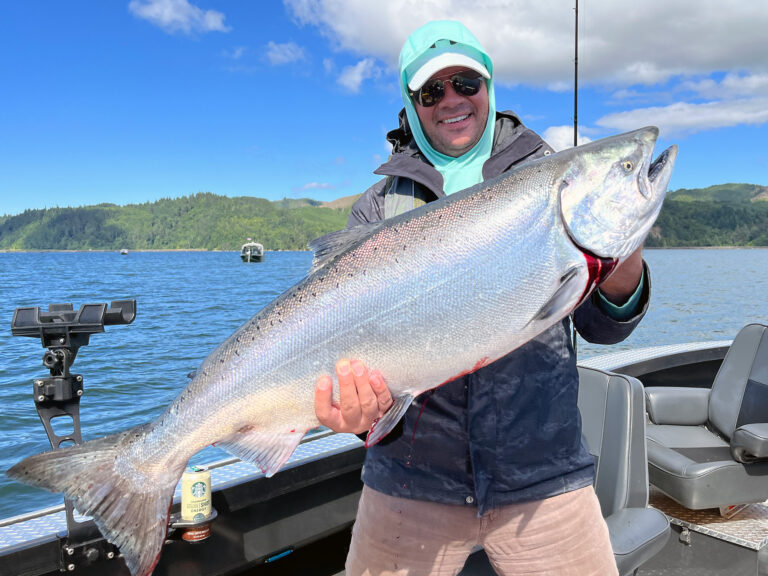When I was discovering surf fishing, I was fortunate enough to fish alongside anglers with years of experience who were eager to share their knowledge. The surf can be a complex puzzle for newcomers, with its myriad of details such as tackle, bait, location, tides, wind, and more. An inexperienced surf fisherman can quickly feel overwhelmed. I was glad for the guidance these seasoned anglers provided, as it helped me find the promised land that lies beyond the first sandbar.
Where to Cast

One of the most crucial lessons in surf fishing is understanding ‘zone awareness.’ Put simply, zone awareness involves locating the area where the fish are feeding. If you can identify the location of the sandbars by the waves breaking over them, you can narrow down where not to cast. The deeper zones between sandbars are known as “troughs” or “guts,” and act as highways for fish. Even without grasping more advanced factors like cuts, holes, and rip currents, you can locate fish effectively if you can spot these features. This is where you want to concentrate most of your efforts.
When heading to the beach, if possible, bring three rods with you. If you have more time than tackle, you can follow the same process with just one rod. Cast your first rod 5 or 10 feet into the surf beyond the foam, your second rod into the first trough, and your third rod past the sandbar. With just one rod, start in zone one and work your way out every 10-15 minutes until you get a bite. Casting past the sandbar is often most rewarding when searching for the prized Florida pompano but requires specific techniques and tackle.
Long Cast Reels

While you may occasionally get lucky and find fish within lobbing distance, there are times when you have to “cast to Cuba ” to locate a school of fish. Long cast reels were designed to enhance casting distance. These reels feature a taller spool, allowing the line to shoot off easily during the cast. The Penn Spinfisher Long Cast reels, for instance, are specifically designed to boost your casting distance while protecting the gears from saltwater. Despite years of hard fishing, I have yet to service any of my Spinfishers. Combined with proper casting technique, a long cast reel can increase your casting distance by about 10 to 20 percent.
Add Distance With Braided Fishing Line
Although the taller spool on a long cast reel aids in casting, using high-quality braided fishing line is essential for optimizing that distance. Typically, the thinner the line, the less wind resistance it offers. So lines with a smaller diameter tend to cast further than their larger counterparts. Monofilament or fluorocarbon can take a set, which results in tight coils forming that slow line leaving a spool. Braided lines have no memory, so they fly off the reel.
Regardless of the brand you choose, consider the diameter and breaking strength of the braid. In the standard American scale, look for 15- to 20-pound test braids or PE 1.5 or 2 for international sizing. This should handle most situations you’ll encounter on the open beach. PowerPro Super 8 Slick V2 and Silk Ocean PE are both excellent choices, from beach or boat. Change your line up and see the added distance.








